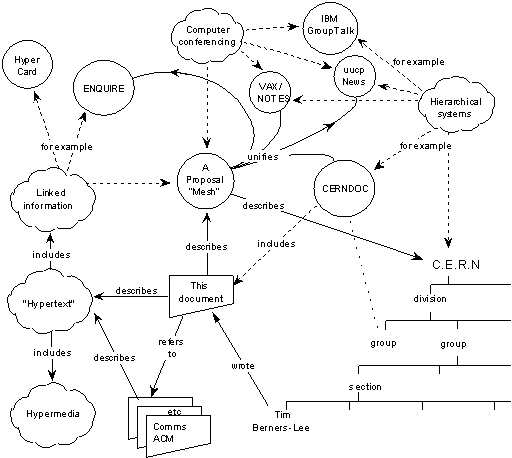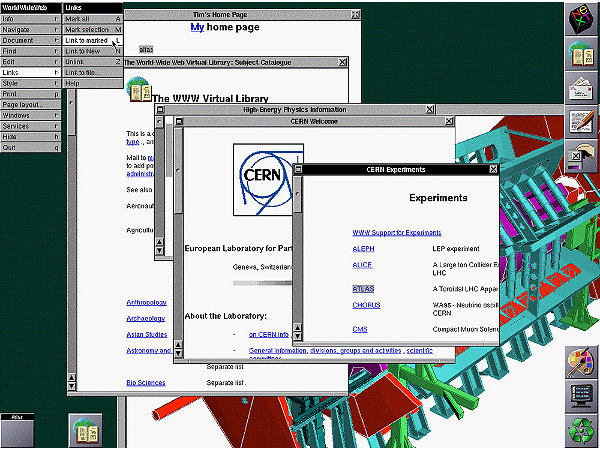In March 1989, physicist turned programmer Tim Berners-Lee presented for the first time his proposal, which was to become the worldwide web. The presentation took place at CERN in Geneva. The project already bearing the ambitious name of WorldWideWeb was essentially an ?underground? initiative as CERN did not support it officially. Berners-Lee and his number-one colleague, Robert Cailliau along with their students and assistants worked on the project.
To remain faithful to history, it has to be said that the late 1980s were a Babel of every so often "conflicting" standards, and a number of projects and hypertext systems had been created to popularise and promote wider usage of the internet: Gopher, WAIS, Usenet, Viola, Hyper-G, Lynx, etc. Founded by a dozen of states, CERN was especially hard hit by this "veritable Babel", the chaos of standards.

Berners-Lee had designed his own hypertext system almost a decade earlier. The hypertext-based WWW created in the Swiss research laboratory had to be viable in a mix of existing systems, document formats and databases.
You had to "make sense of the madness," as the researcher put it.

Berners-Lee's proposal for the display of information for users was a rudimentary version of the elegant visions of earlier pioneers. However, he had a unique concept, which other initiatives lacked, deeply rooted in the internet culture that finally led to the "viral" spread of the system: building from user to user, from system to system, from the bottom up and not the other way round, from the top down. (The only exception is Gopher, which worked similarly, and could also have developed into the worldwide web with some good luck.)
In the spring of 1990, Berners-Lee created the prototypes for the main elements of the web we know today: a browser, URL for addresses, HTML for pages, and HTTP for links.
The rest is history.
